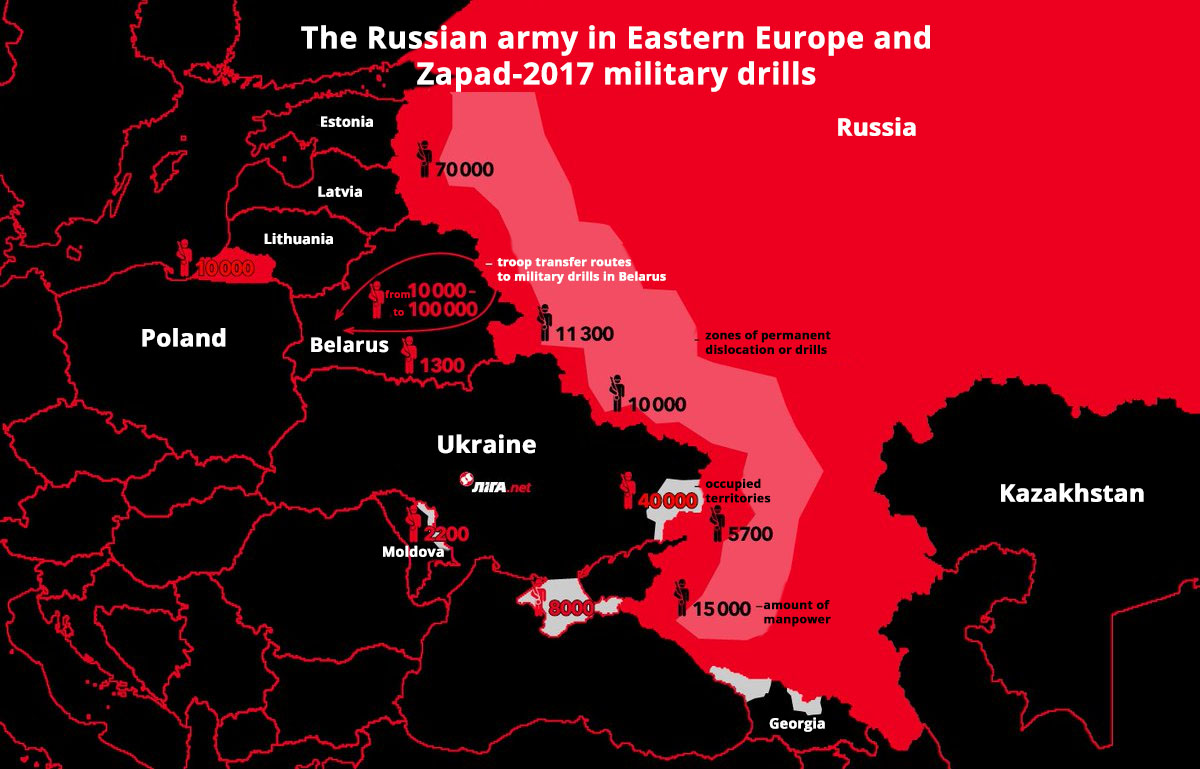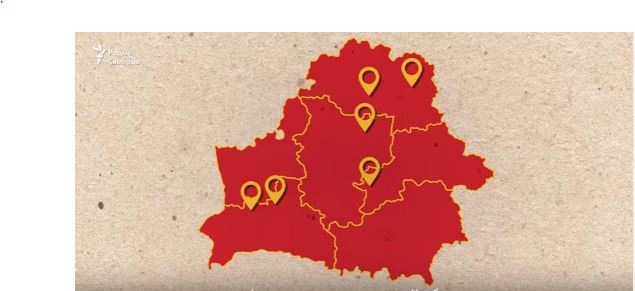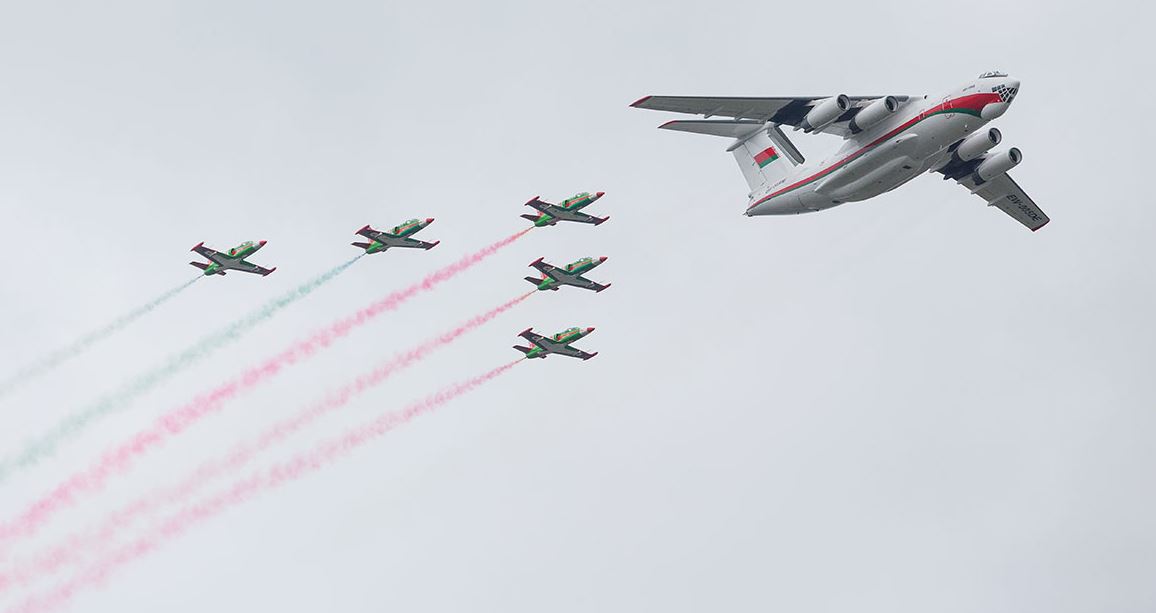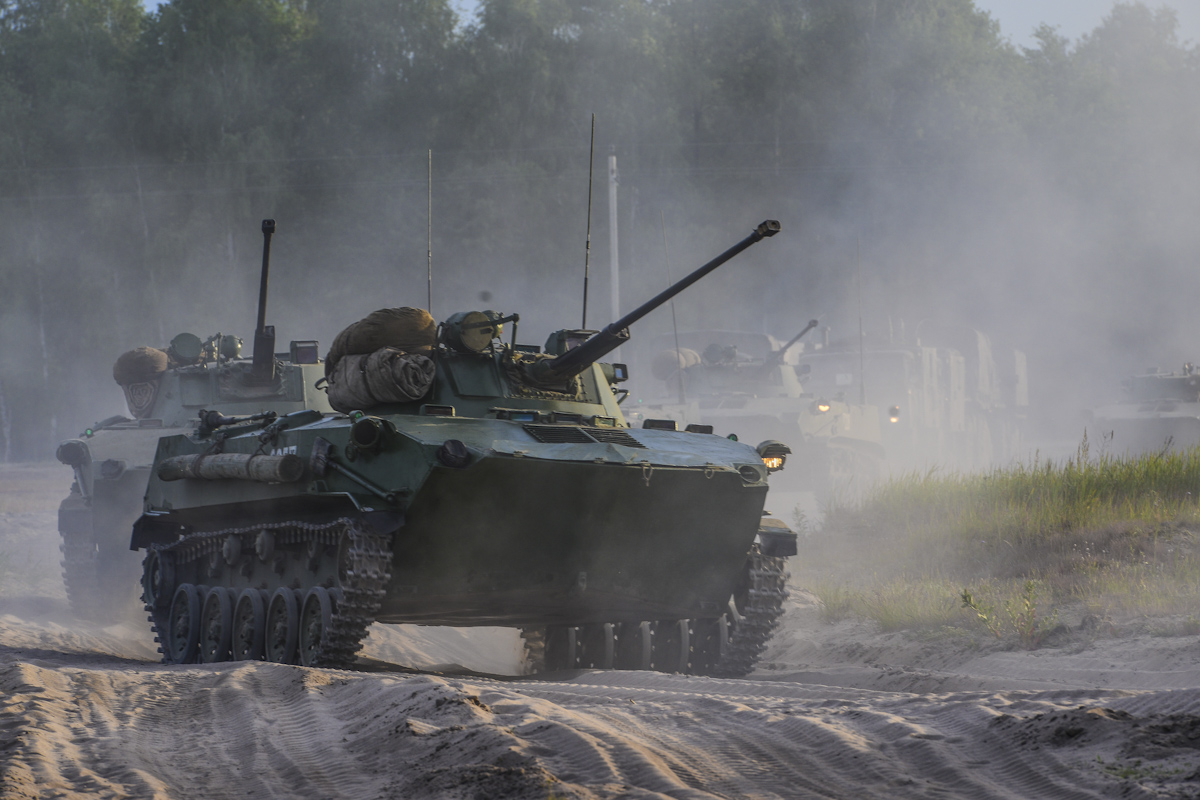Just weeks remain until the joint Russian-Belarusian military exercises Zapad-2017 take place. It is expected that they will be held 14-20 September of 2017 in several military locations in Belarus (not counting that in Russia). Meanwhile, many experts fear these exercises could pose a threat not only to Ukraine, but also to Europe, and above all to Belarus itself. One possibility, among many others, is that Moscow would try to follow the "Crimean scenario"
by occupying the neighboring country under the guise of training.
The director of the Centre for Strategic and Foreign Policy Studies (Minsk, Belarus) Arseniy Sivitsky discussed with our site whether the fears of the threat to Europe presented by the Zapad-2017 military drills are justified.
He noted that when speaking about Zapad-2017 we need to differentiate between two types of military exercises: the joint Russian-Belarusian exercises which will take place mainly in Belarus from September 14 to September 20, and the actual Russian ones, the exact dates and scenario of which are as yet unknown.
"The parameters of the joint exercises are already stipulated: they will be attended by only 13,000 people, of which 3,000 will be Russian military personnel, as well as 680 units of equipment (280 of them Russian). Based on these figures, the military drills are practically the same as the previous Zapad-2013".

Of course, while planning the scale and parameters of these exercises, the Belarusian side tried to do everything possible so external observers wouldn't perceive them as an aggressive action aimed at destabilizing the military-political situation in the region. Belarus is interested in preserving the status of a donor of regional stability and security and, therefore, tries to conduct the exercises in the most restrained manner possible, whilst the Russian side, of course, would like to organize them on a larger scale. This was evident from the unilateral planning of logistics for the supply of military equipment to Belarus without the preliminary agreement of the partners.
However, Minsk rejected these conditions. The scenario of planned exercises is purely defensive in character, and military actions, according to the scenario, are limited to the territory of Belarus, the expert explains.
Arseny Sivitsky points out that Belarus invited 80 international observers in order to emphasize the peaceful nature of the Zapad-2017.
"In addition to the accredited military attaches of Western embassies, special delegations from the UN, the International Red Cross, the OSCE and NATO will be invited. This, by the way, is the first time when NATO observers are invited to such exercises. Separately, Belarus arranged for the presence of delegations from Sweden, Norway and Estonia. Thus, Minsk is doing everything possible to distance itself from the destructive course pursued by Moscow," he assured.

At the same time, the Belarusian expert admits that in the current situation, where Russia and Ukraine are de-facto in a state of war, the expediency of conducting such exercises is very questionable.
"However, Belarus could not refuse to conduct these exercises, because otherwise Moscow would immediately accuse it of violating allied commitments and betrayal. Thus, we are left with trying to do everything possible in order to minimize possible negative consequences. Belarus is not going to associate itself with the Kremlin's aggressive foreign policy strategy," Sivitsky assured.
The analyst warns that the biggest danger comes from those Zapad exercises which will be conducted on the territory of Russia itself, without the participation of Belarus.
"They will be held in the areas of responsibility of the Arctic Strategic Command, as well as the Western and Southern military districts. There is information that the scenario of the exercises includes the introduction of martial law, and, in addition to the armed forces themselves, the troops of Rosgvardia will also be drawn in. Thus, the total number of troops involved can be about 150,000. Most likely, in order to avoid formally violating international agreements, Russia will divide those exercises into several parts on a smaller scale and carry out the so-called 'sudden verification of combat readiness,' which under the Vienna Document 2011 on Confidence and Security-Building Measures does not require prior notification of the international community. The Kremlin is actively using this loophole," Sivitsky warned.
"It's clear that the goal of the Zapad exercises, according to the guidelines of Russian strategists, is the development of a scenario of a possible conflict with NATO, based on the operation of a joint interdepartmental group of Russian troops in the European theater of operations. Moreover, Belarus has nothing to do with the planning of the exercises that will be held on Russian territory and does not have specific information on them. It's clear that for Russia this is a way to demonstrate strength in relations with Western countries and a way to cause divisions within the Euro-Atlantic community by raising the threshold of escalation. Kremlin strategists expect that there will be a group of states for which this threshold of military escalation will be insurmountable. Already, there are a number of European countries that are actively opposed to confrontation with Moscow. In addition, few European countries support the idea, actively promoted today by the US, of spending at least 2% of GDP on defense. Russia can sense this and does everything to aggravate this split," he explained.
In his opinion, in addition to the act of intimidation, Russian military drills may well entail a real escalation of the situation.
"It's unlikely that Russia will dare to attack any of the NATO countries - at least not before it is certain that Article 5 of the North Atlantic Treaty (an attack on one of the participating countries is considered an attack on the entire alliance - ed.) will not be invoked. Moscow can probably aggravate the fighting in the Donbas. At the moment, Russia is intensifying its military activities in Transnistria, which may indicate the Kremlin's intentions to aggravate the military-political situation in the region as a whole," Sivitsky said.
At the same time, he noted: Russia's actions are a threat to Belarus itself, especially if we consider that the Kremlin still insists on placing its military bases on the territory of this country, despite the resistance of the Belarusian leadership.
"We have information that, in addition to creating an airbase, Moscow is also considering options to build land and missile bases through which Russia seeks to have military control of the territory of Belarus. It's not out of the question that the Kremlin will follow the scenario of the escalation of the military-political situation in Eastern Europe during and after the Zapad-2017 exercises, which is one of the options available to Moscow for responding to the new US sanctions. Then the pressure to deploy Russian troops on the territory of Belarus could increase. The Kremlin has also stepped up its powerful disinformation campaign, the goal of which is to show that Belarus is a satellite and military-political vanguard of Russia, and the Zapad-2017 exercises on its territory only prove it. To create such an impression is one of the goals of these exercises. Unfortunately, Moscow is rather successful in this."
According to him, this is central to understand the recent ratification by Vladimir Putin of the protocol on the single air defense system between Russian and Belarus. In particular, the external border of Belarus is fully controlled by the Russian FSB, and the sky by the Russian air defense.

At the same time, Arseniy Sivitsky assured that the signed protocol has made only changes in terminology, but there are no drastic revisions of the agreements that already exist between the two countries.
"We are talking about the unified regional air defense system of the allied state. However, in peacetime, this system does not work, since there is no unified command, and each state is responsible for its national airspace sector. Physically, Russia will be able to control the airspace of Belarus only if it has the necessary military capabilities, in particular, the aerospace and air defense bases deployed on the territory of Belarus. But at the moment there are no such bases, and the Belarusian leadership has no plans to organize Russian military presence on its territory. With this in mind, Russian troops will have to leave the territory of Belarus after the exercises," Sivitsky assures.
However, the expert admits, this does not cancel out the Kremlin's desire to place them in the neighboring country.
"Even with all the effort that the official Minsk put into planning for Zapad-2017, there is always a risk that the Russian side will make a unilateral decision and behave unpredictably. Nevertheless, the Belarusian authorities will react firmly if a deviation from the original plan occurs and will do everything possible to prevent possible surprises or provocations," he warns.
"In addition, our sources in the diplomatic and expert circles of a number of European countries report that the Russian side is actively spreading rumors through diplomatic and informal channels that Belarus has allegedly agreed long ago to locate Russian military bases on its territory as a response to NATO's activity in the Eastern Europe. Another information line is, in fact, the intimidation of European countries by a new crisis, if the EU continues to ignore the Kremlin's position on cooperation with Belarus."
According to him, the near-term military and political situation in the region will be determined by the reaction of the Kremlin to the new US sanctions and by the domestic political situation in Russia itself on the eve of the presidential elections. In any case, the Kremlin will seek to isolate Belarus alongside Russia and block its cooperation with the West and China.
"The strategic task of the Belarusian leadership in this situation is to not allow the country to enter a new round of confrontation between Russia and the West and to prevent the creation of Russian military bases on our territory," Sivitsky concluded.

